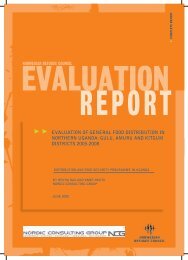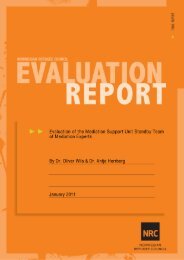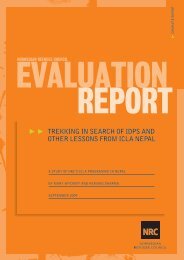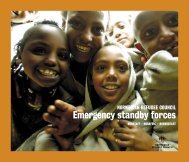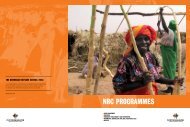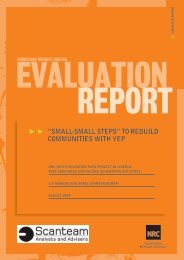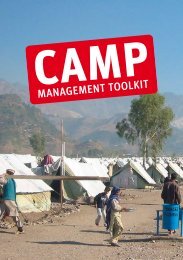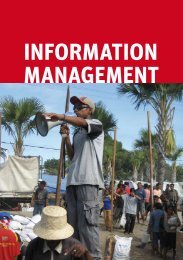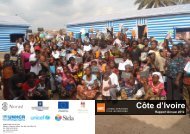Download report here - Norwegian Refugee Council
Download report here - Norwegian Refugee Council
Download report here - Norwegian Refugee Council
You also want an ePaper? Increase the reach of your titles
YUMPU automatically turns print PDFs into web optimized ePapers that Google loves.
Evaluation of NRC Food Security and Livelihoods Projects in Chiredzi and Chipinge Districts of Zimbabwe1. RationaleThe purpose of this evaluation is to provide an independent assessment of the relevance, effectiveness,efficiency, and results / impact of the NRC’s food security projects to the targeted IDPs and hostcommunities in Zimbabwe. The scope of the study was defined as NRC food security and livelihoodsprojects in Chiredzi and Chipinge Districts from January 2011 to August 2012. This included conditionalcash transfers linked to income generating activities, unconditional cash transfers, small livestock passon project, low input gardens, conservation agriculture, and market linkages to support displacedcommunities to achieve self-reliance and household food security. Full details of the Terms of Referencefor the study are contained in Appendix 4.2. MethodologyThe methodology for this study included:• a desk based review of relevant secondary data sources, including: project proposals, <strong>report</strong>sand other documents associated with the program. Relevant documents are listed in Appendix 1.• field visits to various project sites in Chiredzi and Chipinge.• interviews with stakeholders, including key Government departments, Ward officials, andbeneficiaries in each district. The latter included household surveys, focus group discussions andkey informant interviews. A list of stakeholder interviews conducted is contained in Appendix 2.• Interviews with NGOs working in the vicinity who are not partnering with NRC.Independent enumerators conducted beneficiary interviews and Focus Group Discussions (FGDs)between 3 rd – 14 th September 2012. A total of 717 beneficiaries (310 in Chiredzi, and 407 in Chipinge)participated in the evaluation process, through a mixture of Focus Group Discussions, individualinterviews and visits to some income generating projects established (see Appendix 5 for details).3. Relevance / AppropriatenessOverall, the project was successful in its primary goal of contributing to the durable resettlementand integration of internally displaced people and returnees by improving their food security andaccess to sustainable livelihoods opportunities.‣ 84% of beneficiaries <strong>report</strong>ed increased acceptance of IDPs / returnees within the host community.‣ 99.6% of beneficiaries rated the type of assistance they received as “good” (11%) or “very good”(88.6%) at meeting their needs.‣ 84% of beneficiaries <strong>report</strong>ed consuming an increased quantity of food, and 77% <strong>report</strong>edconsuming an increased variety of food. Most of those not <strong>report</strong>ing an increase were goatrecipients, w<strong>here</strong> income benefits have not yet been realized.‣ Average number of meals eaten per day is estimated to have risen from 1.9 to 2.6.‣ 26% of beneficiaries <strong>report</strong>ed an increase in the number of assets owned. In 1% of cases assetsdeclined, mainly due to the need to provide inputs for livestock project (e.g. medicines / feeds).Community based planning was effective in identifying local needs and priorities. It ensured acceptance/ ownership of the Ward Plans by key stakeholders, e.g. beneficiaries and local government agencies.Key learning points related to the appropriateness of project components were:‣ the short term nature of the unconditional cash program and absence of a formal exit strategy meantthat 66% of beneficiaries had problems maintaining food consumption after cash distributions ended,and children who had been enrolled in school were thus withdrawn again.‣ the low number of goats distributed per beneficiary (2 does), combined with the pass-on element,means that income and nutrition benefits have not yet been realized. Some beneficiaries haveexperienced reductions in income and assets due to costs of livestock medicines, etc.‣ the ability of markets to respond to increased demand was not assessed prior to the cash-basedprograms, leading to shortages of some commodities. Whilst adverse effects were not significant onthis occasion, future response planning should include an assessment of response capacity.1




